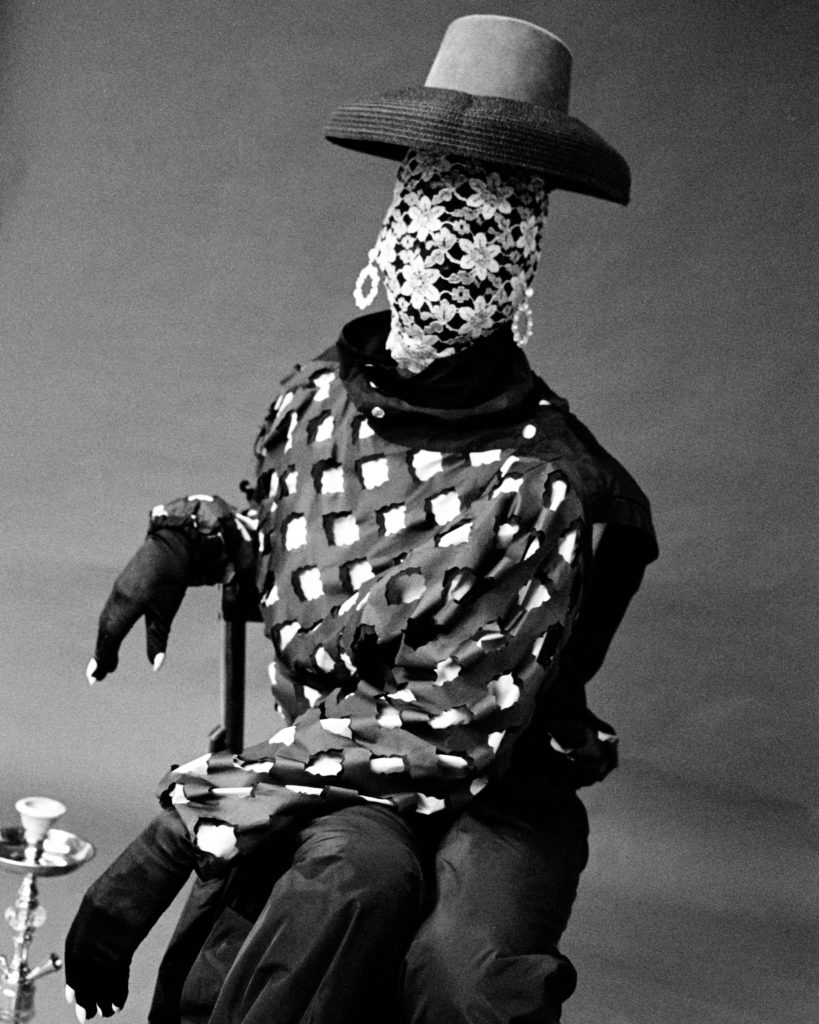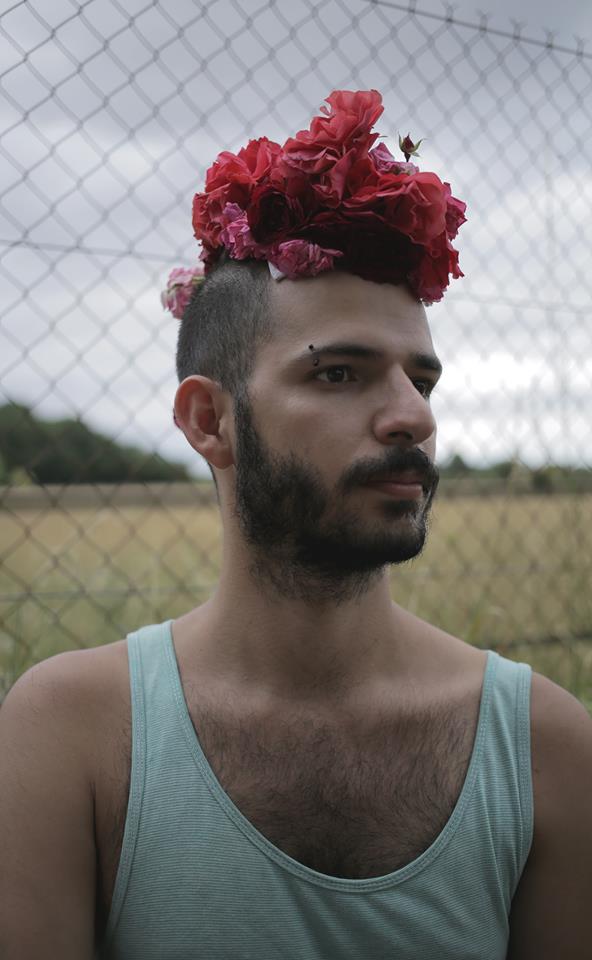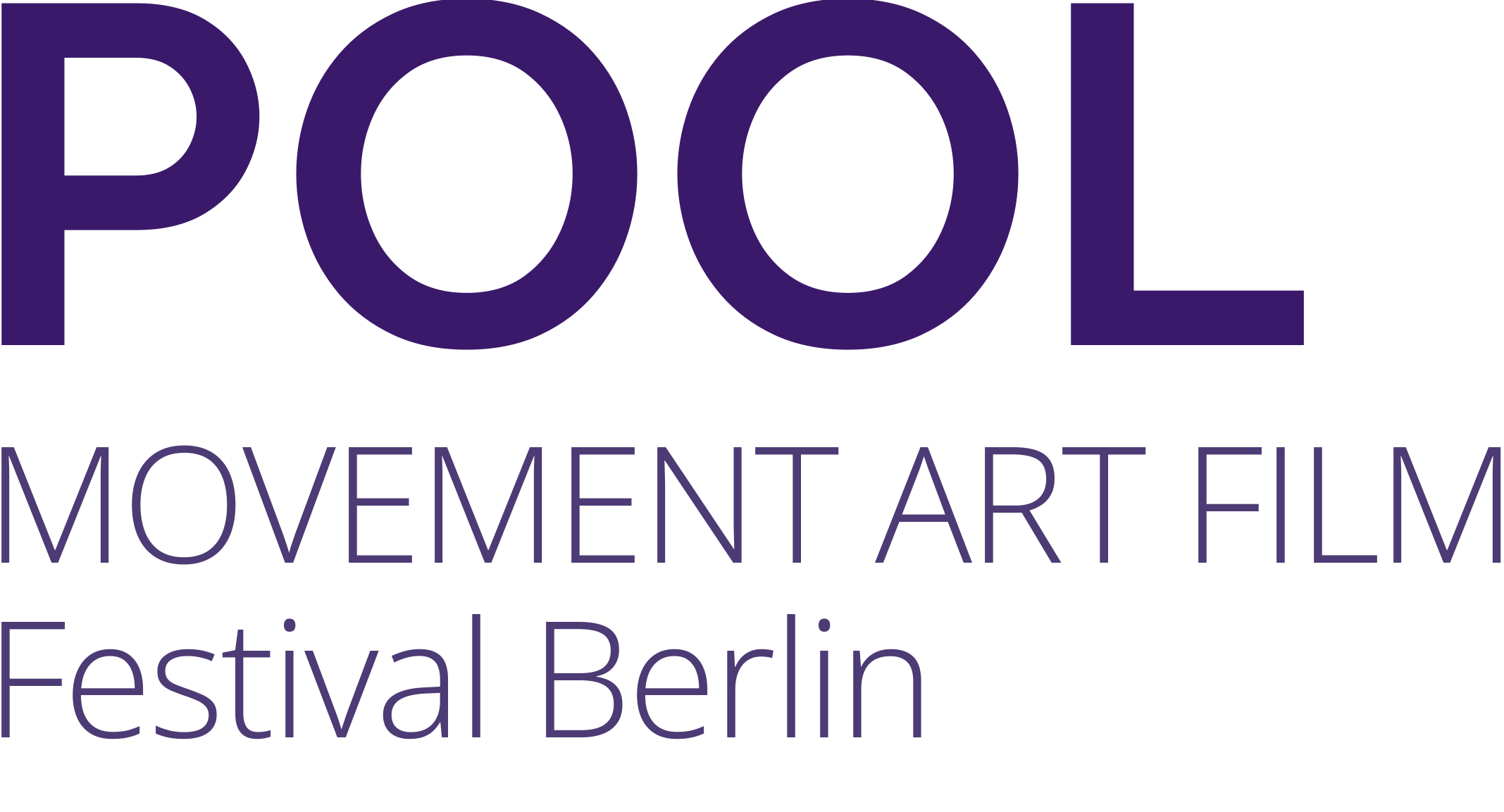A fashion of film –
POOL dives deeper with Hadi Moussally
Hadi Moussally’s two films Les fleurs du mâle, made with Olivier Pagny, and Truth is in the details created with Olivier Pagny and choreographer Raphale Miro Holzer, were screened as part of the programme at POOL 23. For his continuous work in the field of dance film, Hadi Moussally was awarded an ARTIST PRIZE at POOL23 festival.
13.12.2023
Article by Silja Tuovinen
Images from the archive of Hadi Moussally
***
Right before leaving to interview Hadi on a hot day in September Berlin, I rewatched four of Hadi’s films Les fleurs du mâle, Truth is in the details, Oh boy! and Bellydance Vogue all of which have been featured at POOL festival over the years. I chose to wear a soft grandmotherly white shirt with white lace on the collar – a conscious inspiration from Hadi’s films. Sitting on the tram, I gaze at the clothing of the people around me. I observe the softness of fabric, the bends of the clothing, as well as the way light hits people’s skin and hair. My eyes go toward mundane, delicate expressions of individuality. What is happening here? – I believe to have unconsciously picked up on a manner of gazing from Hadi’s films.
Artist
In Hadi’s films it is particularly the play with form, style and unique experimental choices that set his work apart.
Born and raised in Lebanon, Hadi Moussally, a renowned filmmaker and photographer, was initially faced with a task of choosing between studying engineering in France or filmmaking in Lebanon. After one year of trying out math, it appeared repetitive and restricted in form. Hadi switched to filmmaking. Today, in Hadi’s films it is particularly the play with form, style and unique experimental choices, which math as a career perhaps would not have offered, that set his work apart.
Hadi is a co-founder of production company H7o7 Studio with cinematographer Olivier Pagny, based in Paris. The two do all their film productions together: “all of my successes are also Olivier’s” Hadi says. Their genre-bending films have been touring internationally from small to bigger festivals. “We do all kind of films and photos, and when I say all kind, I really mean all kind. So, events, corporate, fashion, dance, documentary, fiction. We like to experiment with a lot of things” Hadi tells me.
Recently Hadi has also appeared from behind the camera, taking on the role of a performer on stage and on screen as Salma Zahore, a drag character born through a spur of the moment invite to take the stage of Candy Darling Bar in Barcelona. The character is rising to fame and upholds many of the values that Hadi holds dear in artmaking, particularly his perceived need for more queer Arab representation.
“If I can summarise my work, I call myself an Artivist against injustice. So, I use art as activism to talk about all kinds of injustice, at least that touches me. I talk about racism, homophobia, and sexism in my work. I try to use my body that was for a long time under shame. My body was always for the society and not for me. I’d always be careful and change it to make peace with people.” For instance, how gender is performed through clothing and dance is one question that has been part of creating the character of SALMA ZAHORE.
Hybrid
Hadi’s films linger somewhere between what is real and what is fairytale. He has two master’s degrees in film, the first in fiction film, and the second in anthropological documentary. The second degree changed his vision of filmmaking: “Before the films were fiction, so everything is created from point zero, from scratch. Now it’s more like anthropology. So you look at this person and you try to understand how you can bring the best out of them. I remember the first time they showed us a film of someone washing the plates. I was like, what is this? But in this 15-minutes you understand everything – if the person is neat and organised or chaotic. You understand the human behind the screen.”
My work is literally hybrid. Each film has a different, unique style
Hadi creates what he calls himself “hybrid films” that combine multiple filmmaking methodologies and often come to be fluid productions fitting simultaneously in a variety of genres. “Sometimes the films are shown in dance film festivals. Other times in experimental film category, sometimes documentary or mobile phone film festivals. My work is literally hybrid. Each film has a different, unique style” Hadi explains.
Creating in-between multiple film formats offers an avenue for being fashionable. Hadi creates both independent films, as well as makes collaborations with different artists. For instance, Bellydance Vogue is a film shot independently in two hours with a 4,49 € budget, the cost of a VHS filter app for a camera. The film has travelled around in over 80 festivals receiving multiple prices. Hadi collaborates often for free when it is a genuine collaboration with exchange of ideas, and a vision created together. The truth is in the details with choreographer Raphael Miro Holzer is a beautiful example of this.

Film format
Hadi names Michel Gondry, and particularly his music video productions for among other the Chemical brothers, as a huge inspiration for them. “I always say you have to have a super great idea visually or a scenario like he does.” Another two inspirations for Hadi are Spanish director Pedro Almodóvar and Danish filmmaker Lars von Trier.
Technically, I try to have something particular in each film that makes it memorable.
The technological aspect of filmmaking, for instance the choice of camera, format, and style, is of underlined importance to Hadi, and an aspect where cinematographer Olivier Pagny gets to shine. The way a film format creates poetry in itself, expresses particular sensibilities, aesthetics and mood receives testimony in Hadi’s films. Hadi tells me: “I always try to experiment with many different media such as VHS, super8, super high quality, and in edit experiment with layers and colour. Technically, I try to have something particular in each film that makes it memorable.”
In Oh boy! the frame of the film moves from side to side, creating even vertical images within today’s normalised horizontal format of film screens and movie theatres. Les fleurs du mâle is filmed on celluloid film with a Super8 camera without any possibility to see, rewatch, edit or correct the footage before it was shown at a festival Regard Indépendant, and received an audience-award. The soft lens in Truth is in the details blends the patchwork made of dancing images and creates an almost textile-like expression of choreographic splendour.
Soft and intimate
In the beginning of this article, I describe how watching Hadi’s films inspired a soft gazing for me, that is prominent in his films. What better way to approach the topic of softness than to discuss memories with a grandmother?
Hadi shares with me an anecdote from making a film about his own grandmother. It exemplifies wonderfully through what kind of process and presence Hadi’s intimate films spring about. “I did a documentary with my grandmother, wanting to show the fact that time passes by, and you can’t do anything about it. I wanted to show that she was very old, not doing so much, except sleeping, going to the bathroom, eating on the sofa, sleeping again – that’s the trajectory. She can’t even see the mirror because she is too small for it. I was filming with her and in the beginning, she was always trying to look her best and put her hair up and everything. I was like – that’s amazing but that’s acting, that’s not her. So, what I did is I put a camera next to her. The first day I knew I was not going to use any footage, the second day the same thing. After that she was so used to it that she forgot about it.“
What is important for Hadi is the person in front of him, and inviting their most authentic self to come out. This is a key element in finding that uniqueness that each of his films have. Hadi tells me: “I always try to find little things that touch me, and that’s why it’s a lot of close-up and intimacy, but not too intimate. I try to respect people. Like when you film, not to film everything – I try to be distant and close at the same time.”

Fashion
Fashion is important in Hadi’s films. When it comes to this word, we can talk about it from at least two perspectives. First, fashion as an everyday act regarding what you wear, how, and why. Second, the fashion, meaning the form, format, and style of the film – the way of the film itself.
What is fashion? Not designer things only.
Fashion is how you dress, what is a trend, how you define yourself.
Some of Hadi’s films, such as Truth is in the details, has been shown in fashion film festivals, despite not showcasing expensive brands as one might assume would be a defining criterion. “Fashion is a style of how you put yourself together. So even a film with no designer clothes could be a fashion film” Hadi explains. “What is fashion? Not designer things only. Fashion is how you dress, what is a trend, how you define yourself. Even what Hadi’s grandmother wears at home is fashion – “it reveals a style of a culture, a city a history, and a life situation”according to Hadi. Fashion might be even more than the clothing – a way of moving through the world. Hadi tells me that in his films he tries to create fashion overall visually, not only through clothes.
This is where we get to the second reading of fashion in Hadi’s films. To my eye Hadi’s films could be viewed almost like textile, pattern, texture or weave. What is perhaps at the core is not so much the fashion in the films, but rather the fashion of the film. Hadi repatches a world together in his films, using among others light, textiles, and movement, like some kind of allies.
Hadi has experienced needing to constantly justify his self-expression in the eyes of others and society. These experiences might be translating to Hadi’s way of creating new worlds and fairytales through filmmaking. I make a remark, that to me it is sounding that Hadi makes films with a loving gaze in a world that he gets to experience is also full of hate, often directly targeted at himself through hateful comments on social media. Hadi replies: “we need it, we need love. Even when we don’t understand each other, we should respect each other.”I take with me from Hadi that filmmaking can be a practice of loving and caring – a rebellious, fashionable expression.

HADI MOUSSALLY
*Lebanese filmmaker, photographer, and performer with two master’s degrees in fiction and documentary film
*Currently based between Paris and Barcelona
*Co-founder of production company h7o7Studio with Olivier Pagny
*Creates films in multiple categories among others from fiction to documentary, and commercial to independent films
*His films have been featured in multiple festivals, and won a variety of awards around the world in dance, fashion, experimental and documentary festivals
*performs as SALMA ZAHORE, a queer arab performer
* http://www.h7o7.com/
*www.instagram.com/Hadi.Moussally
*www.instagram.com/SalmaZahore
